9 Types of Chainsaws to Chew Through Any Tree
Author: Chris Miller | Editor: Omar Alonso
Review & Research: Jen Worst & Chris Miller
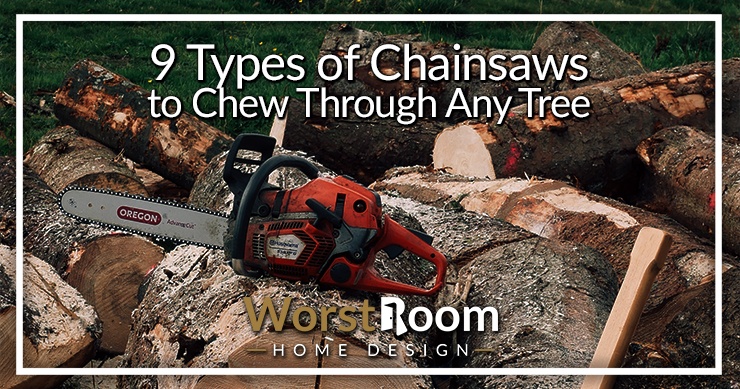
From cutting down big trees to shaping logs for woodworking purposes, all the different types of chainsaws are the most useful tools to get the toughest work done without much effort. As people have varied needs, the tool has also evolved over the past years.
Nowadays, you can find many chainsaw varieties in the marketplace, varying in blade design, power requirements, operation style, uses, etc. However, each chainsaw has two main parts at the core: the saw blade and a small cylinder.
With so many options at hand, you might get confused about which one to pick according to your needs. To make things easier for you, here we will discuss the features, uses, and benefits of each chainsaw type. So without further ado, let's jump right in.
9 Types of Chainsaws
The overall purpose of using a chainsaw is almost the same for most users. However, some chainsaws are easier to work with, while some are cheaper but a bit difficult to handle. Despite the differences, they're the most efficient types of saws invented thus far.
We have compared the designs, ease of use, good sides, drawbacks, and price points of all the types so that you can decide which one is right for you. Here are the chainsaws you can choose from.
Top-Handle Chainsaw
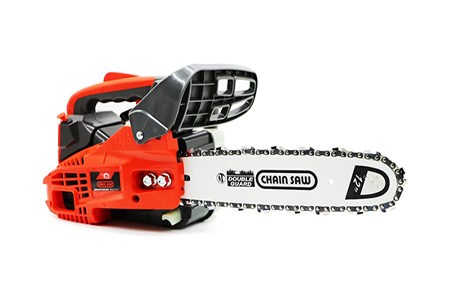
Designed for arborists and professional climbers, top-handled chainsaws are perfect for off-the-ground cutting jobs. The handle of this chainsaw is placed above the fuel tank so that you can easily handle it with one hand.
Besides, you'll have a precise balance over the tool even at the highest position on the tree or when you're precisely notching a tree. For better maneuverability, top-handled chainsaw types are made extremely lightweight.
The compact design helps the user to perform any limbing task efficiently. You can buy this type of chainsaw with 12-inch or smaller blades.
Typically, these chainsaws come with various safety features like belt eyelets, a kickback guard, ergonomic handles, strap attachment points, etc. Manufacturers also add impact-resistant features for increased life span and ease of use in tough situations.
Before you purchase them, you should also consider the downsides of top-handled chainsaws. Because of their unique design, they aren't suitable for cutting heavy logs on the ground.
Also, we don't recommend them for beginners as only professionals can handle this tool while maintaining proper safety. The cost of top-handle chainsaws is greater than other types.
Although the output is strong, these types of chainsaws consume huge power. So, consider these while choosing.
Rear-Handle Chainsaw
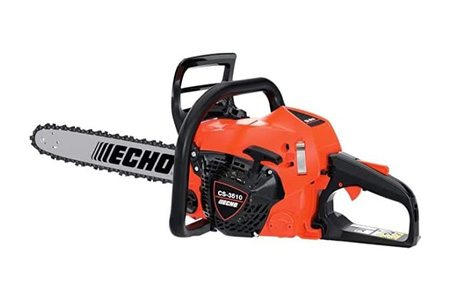
In this type of chainsaw, the handle is placed on the tool's rear portion, and the engine or tank is right in front of it. As a result, you'll need to use both your hands to handle this chainsaw properly. The benefit of this design is that you get better leverage, and you can easily turn the tool in every direction.
Plus, the simultaneous use of both hands offers greater safety and handling. Since the rear handle is easier to grip, you can work longer without having blisters or bruises on your hands. The convenient design allows you to access the start button and gears easily. So, the work will be done faster.
Rear-handle chainsaws are used to trim hedges, cut logs on the ground, chop lower branches, etc. Even if you're a beginner, you'll easily understand their usage and get comfortable with the tool pretty quickly.
However, these kinds of chainsaws are not as powerful as their counterparts and only suitable for ground application. Also, using both your hands can be a hassle at times.
Pole Saw
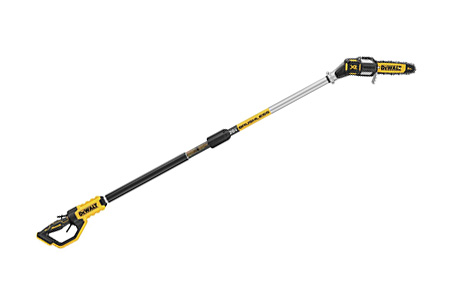
When it comes to pruning and trimming tree branches, most gardeners prefer pole saws over the traditional ones. Thanks to the extendable pole, cutting trees and shaping hedges is a piece of cake.
The tool has three main parts: a large drive rod, the fuel tank or engine, and a small standard saw. As a pole saw is way longer than a regular chainsaw, it remains far from the user and reduces the risks of accidents (you don't want to use this kind of tool while climbing a ladder).
Also, you don't feel the vibration of the tool much despite receiving strong performance. However, it's the power source of the saw that decides how powerful the tool is. Gas-powered pole saws are the most powerful of all.
Although they feature a smaller blade, the pole is usually 6 feet or taller for convenient uses. Also, these types of chainsaws can function for a long time with full fuel. Unlike the electric pole saws, they don't require any cords to connect with the power source. Hence, these saws offer great mobility and versatility for the users.
We can recommend both gas-powered pole saws and electric pole saws, depending on your preference. No matter what, when it's time to learn how to prune crepe myrtle, as an example, you'll be reaching for any kind of pole saw for sure.
Gasoline Powered Chainsaw
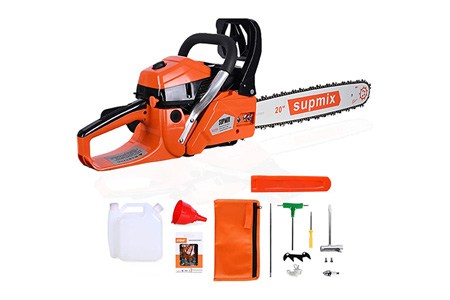
This one is undoubtedly the most heavy-duty chainsaw on the market. It's extremely powerful and capable of cutting down the hardest wood without much effort. Gasoline-powered chainsaws are mostly used in industries and by professionals.
As you can guess, these chainsaw types are very heavy and difficult to maneuver. It creates loud noises and high vibrations while functioning. So, you can't use it in a residential area. The chainsaw is also difficult to handle, so it's strictly used by experts only.
Gasoline-powered chainsaws are also the most expensive varieties of chainsaws on the lot. If you're a professional who works with heavy trees and logs regularly, you can go for this one to efficiently perform your everyday tasks.
Corded Electric Chainsaw
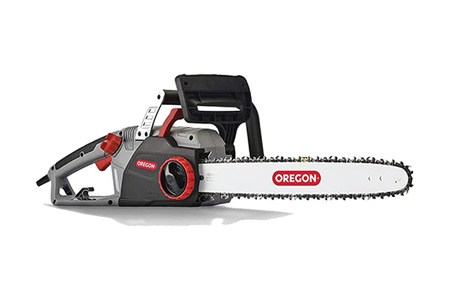
Instead of an engine, electric chainsaws feature motors that run on electricity or battery. Corded electric chainsaws have the typical design and efficiency. They come with a large electric cord that needs to be plugged into a power source for the chainsaw to work.
The main benefit of these kinds of chainsaws is that they are suitable for almost all woodworking tasks. Plus, they are cheaper and lighter compared to the gas-powered ones. You can easily handle the device and ensure maximum safety while working.
Since corded electric chainsaws are pretty popular, they are available in different sizes. The major drawback of this chainsaw is the lack of mobility. No matter how long the cord is, the mobility is limited. However, it's still a great choice for indoor work.
Cordless or Battery Operated Chainsaw
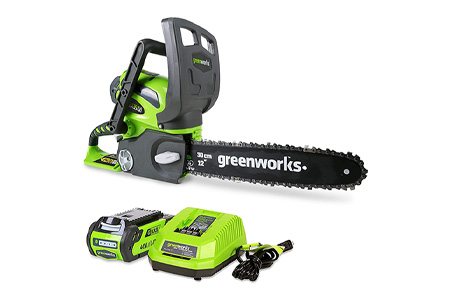
To solve the mobility issue of corded electric chainsaws, cordless chainsaws were introduced to the consumers. These types of tools require no separate power source or fuel for operating. Instead, they run on powerful batteries to offer maximum maneuverability.
As the tool is lightweight and compact, it's incredibly easy to work with. Of course, it's not as powerful as the gas-powered ones, but it's still on the safer side. Moreover, you don't have to worry about fuel refilling and toxic emissions.
The cost of battery-operated types of chainsaws is a bit lower than gas-powered ones. Still, you need to spend considerable money to buy them as lithium-ion batteries are quite expensive. Some cordless chainsaws also come with rechargeable batteries.
For versatile uses, the bar length of these tools varies from 8-18 inches. You can use this tool both indoors and outdoors as the motor creates a low amount of noise.
Altogether, battery-operated or cordless electric chainsaws are a great choice for regular use by beginners and experts.
Pneumatic Chainsaw
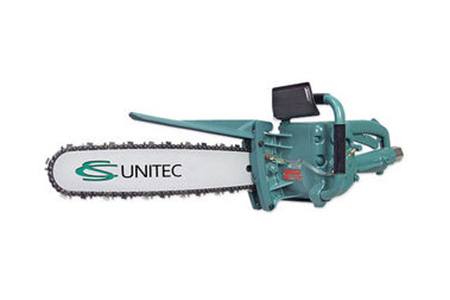
Ever wondered what the big industries use for cutting all those types of cedar trees through their thick trunks? Pneumatic chainsaws are the most powerful choice for industrial settings. As the name suggests, these chainsaws use air compressors to power the saw blade.
Unlike regular chainsaw varieties, this one is huge and has a somewhat different design. The blade is made super strong and powerful to cut through the largest tree branches and trunks. So, this tool is heavy and loud.
Since these chainsaw types are not suitable for domestic uses, you'll find it only in professional workshops and large industries.
Manual Chainsaw
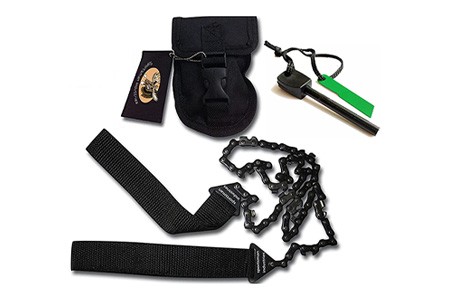
Also known as pocket saws, manual varieties of chainsaws were popularly used before widespread electric and fuel-powered ones. This tool features a chainsaw chain that needs to be operated using two hand-driven handles on each side.
Manual chainsaws are available in different sizes. Smaller ones can be easily operated by only one person while the larger ones need at least two. The speed and efficiency depend on the user as there is no fuel or electricity to power the tool.
Although it's not as convenient and fast as the other types, manual chainsaws are safe, cheap, and easy to work with. Also, you can effortlessly carry it anywhere you want. It doesn't emit any toxic gas like the gas-powered ones, so manual saws are a more environmental-friendly option.
Plus, you can operate these types of chainsaws fairly quietly without creating any annoyingly loud noise. You can use it for pruning, trimming branches, splitting softwood, and other light domestic uses.
Mini Chainsaw
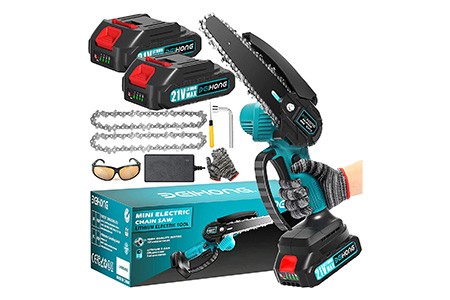
A mini chainsaw is typically battery powered and used for situations where you might simply use branch pruning shears (loppers) and either don't have the strength or have so much to cut that you're better off with a little help.
The handles on these chainsaw varieties are no larger than what you'd expect from a battery operated power drill and can be used one handed to fell small trees, clean up dangling or fallen branches, or even cut small-sized firewood.
Even on these small chainsaws, you need to count how many times you sharpen the chainsaw blades so you know to purchase a new one when the time is right.
Types of Chainsaws That Nothing Can Withstand
All these various kinds of chainsaws are lightweight, safe, easy to handle, and budget-friendly. However, for the heaviest tasks, gas-powered chainsaws are your best bet.
So there you have all the different types of chainsaws for domestic and industrial woodworking tasks. If you ask me which will be the best for light to medium-duty tasks, I would recommend electric or battery-operated chainsaws. Any bigger tasks, you'll want to lean on the reliability of the gas-powered chainsaw.



